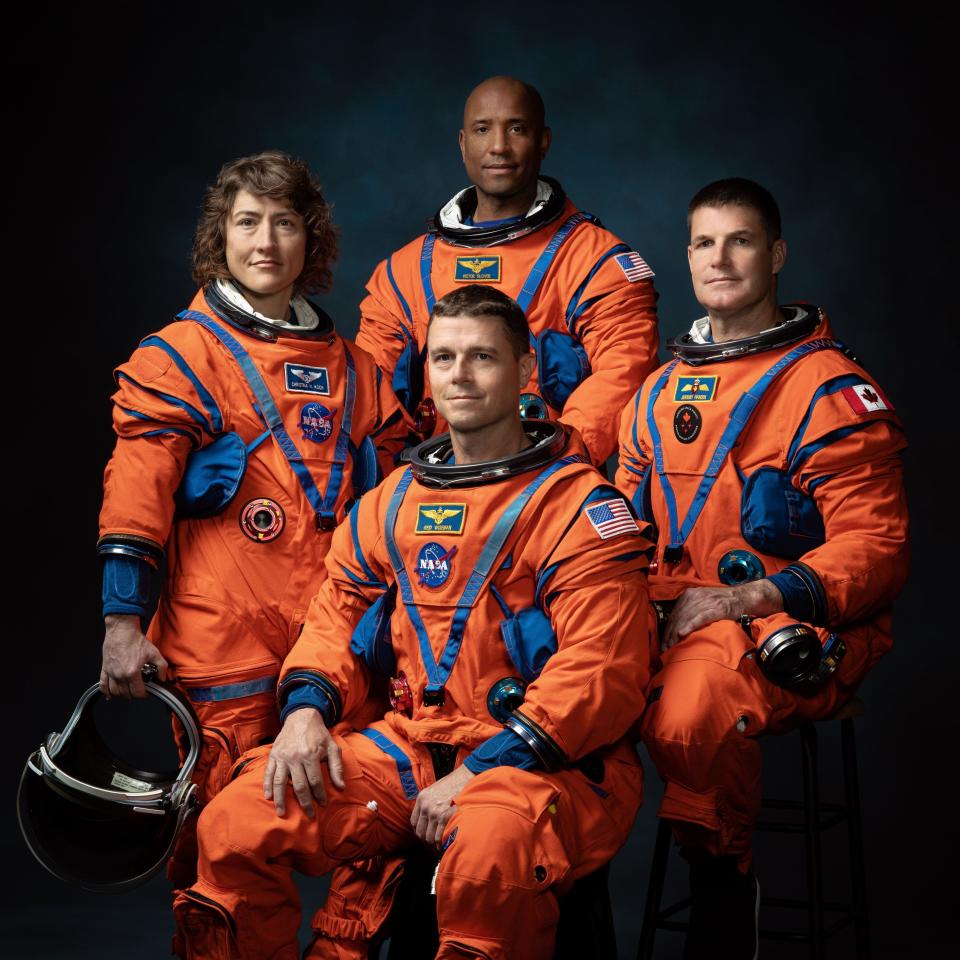NASA delays Artemis II and III missions that would send humans to the moon by one year
- Oops!Something went wrong.Please try again later.
Humanity's second "giant leap" will have to wait an extra year after NASA pushed back the first planned mission to send astronauts to the moon in more than 50 years.
Artemis II, NASA's mission to send astronauts around the moon, had its launch date bumped back to September 2025 from its original date of November of this year, NASA announced on Tuesday.
The delay will also set back the launch of Artemis III, which would see two astronauts touch down on the surface of the moon, to September 2026, from its original 2025 date.
"Safety is our top priority," NASA Administrator Bill Nelson said at a press conference on Tuesday. "To give Artemis teams more time to work through the challenges with first time developments, operations and integration, we're going to give more time on Artemis II and III."
NASA cited the reasons behind the delay as a battery flaw and "challenges" with the air ventilation and temperature control systems of the Orion spacecraft.
Engineers "found a few cases where we believe there could be some deficiencies in the performance of the electrical system in particular," Amit Kshatriya, NASA's deputy associate administrator, said during the press conference.
Kshatriya said engineers also detected some issues with the spacecraft's "motor valve circuitry" that could have cleared safety requirements for Artemis II, but not for Artemis III.
NASA also said it will continue its investigation into "unexpected" charring of the spacecraft's heat shield during the Artemis I mission in late 2022, which saw the Orion orbit the moon and return to Earth's atmosphere over a period of 25 days.
"The lessons of our history is that, even though we believe we understand and that our hardware is performing according to requirements, we have to be absolutely certain that we understand the integrated performance of that system when there are excursions from that performance," Kshatriya said.
The delay came days after NASA's joint effort with private companies to put a U.S. lander on the moon failed after the launch of Peregrine Mission 1 was foiled by a fuel leak on Monday.
The Vulcan rocket, which contains the ashes of some celebrities, developed issues around six hours after it launched from Cape Canaveral on Monday. "There is, unfortunately, no chance of a soft landing on the moon," Astrobotic Technology, which owns the lander, announced on Tuesday.

Artemis missions plan to land humans on the lunar surface
With Artemis II, NASA plans to send four crew members from a launchpad in Cape Canaveral, Florida, to the moon and back, a journey of 600,000 miles. The crew will consist of Americans Reid Wiseman, Victor Glover and Christina Koch, and one Canadian, Jeremy Hansen.
The mission is a precursor to Artemis III, which aims to land astronauts on the moon's south pole for around a week. NASA has not yet announced the crew, but said it would include the first woman and first person of color to land on the moon.
All three missions, including Artemis I, set the stage for Artemis IV, which NASA said will keep its planned launch date of September 2028. The mission would send a crew to Gateway, humanity’s first lunar space station which is planned for the future.
Artemis III's launch also depends on the success of SpaceX's Starship rocket, which is tasked with carrying the crew from Orion to the lunar surface.
Starship must be able to safely orbit Earth with a crew before it can be deployed on the NASA mission, but a test flight of the 400-foot rocket in April of last year only lasted three minutes before it exploded.
NASA still congratulated the company on the successful launch – "with great risk comes great reward," Nelson said in a statement at the time.
Just as the Apollo 11 mission in 1969 followed a fierce space race between the U.S. and the Soviet Union, NASA is locked in competition with China to make the lunar landing after China's Chang'e 4 spacecraft became the first ever to land on the dark side of the moon in 2019.
But even with the recent delays, NASA remains confident that the U.S. mission will touch down first.
"I think that China has a very aggressive plan," Nelson said. "But, the fact is that I don't think they will."
This article originally appeared on USA TODAY: NASA Artemis missions delayed: Here's why the timeline was pushed back

